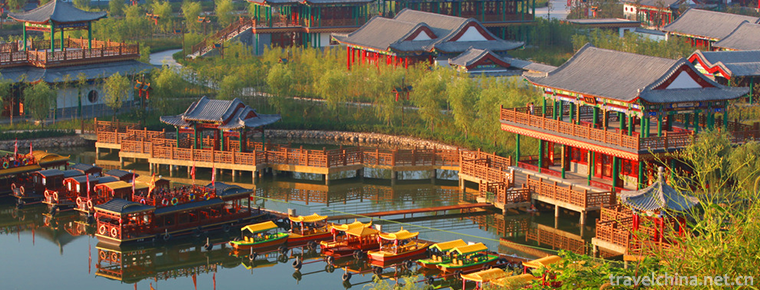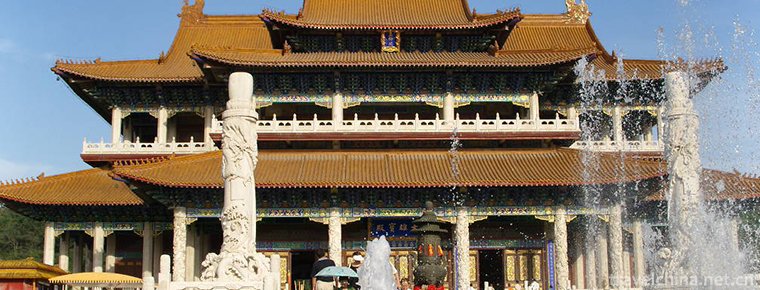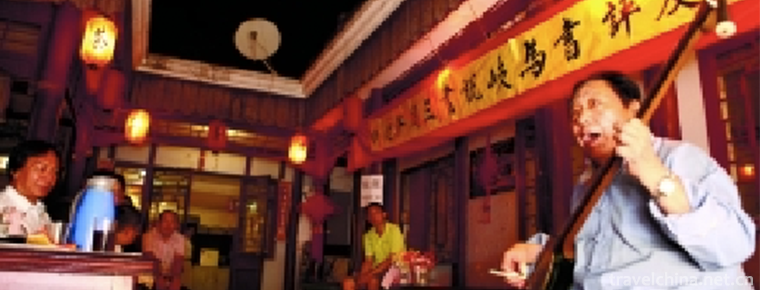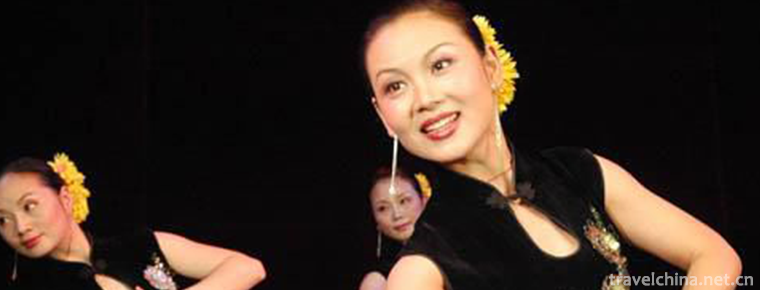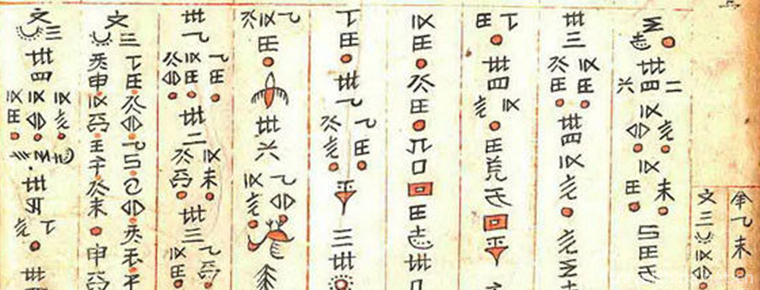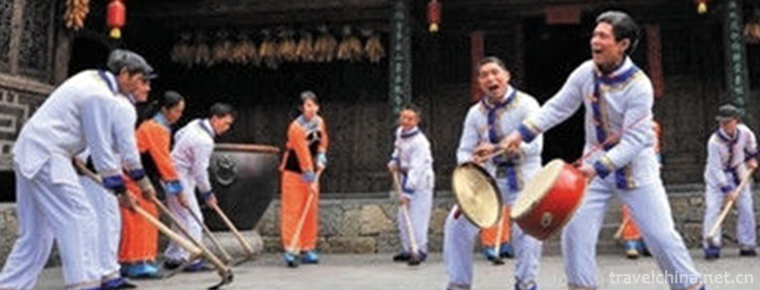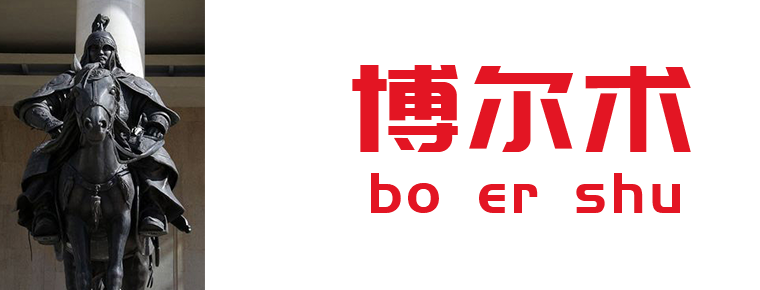Shangluo Flower Drum
Shangluo Flower Drum
Shangluo Flower Drum, Shangluo City, Shaanxi Province, is one of the national intangible cultural heritage.
Shangluo Flower Drum, also known as Flower Drum and Ground Bumper, is popular in 7 counties (districts) of Shangluo City, Shaanxi Province, especially in Shangzhou, Danfeng, Zhenan and Zhashui. During the three years of the Qing Dynasty, Yunyang, Hubei, suffered from floods. A large number of victims entered Shangluo area, bringing the popular Huagu Opera in Yunyang. Later, they gradually changed to Shangluo dialect to sing, and absorbed many folk tunes of Shangluo, eventually forming Shangluo Huagu. The traditional singing music of Shangluo Huagu has a single structure, smooth and graceful melody and a long history. It plays a "living fossil" role in the study of the development and evolution of opera music.
On May 20, 2006, Shangluo Flower Drum was approved by the State Council of the People's Republic of China to be listed in the first batch of national intangible cultural heritage, numbered IV-61.
historical origin
There are many theories about the origin of Shangluo flower drum. According to the legend of Zhenan and Shanyang artists, Shangluo Flower Drum began in Hunan and was uploaded to Hubei, from Hanshui to Ankang and Hanzhong in the south, and from Danjiang to Danfeng, Shangxian and Luonan in the north, and then to Guanzhong. According to the legend of Danfeng and Shangxian artists, Shangluo Flower Drum was derived from the uproar music of Qinlong in Han Dynasty. It was originally used for military drills and military honor guards. Fan Dacheng's "Records of Guihai Yuyazhi" contains a blowing band in Zhuge Liangjun, which is hung around his waist with gongs and drums, struck by his fingers, sang lyrics and routed the enemy. There are also such records in Dunhuang Pick-up and Sui-Tang Romance. The 36 brothers of Wagang Village in the late Sui Dynasty, who used to "beat flower drums" as a cover, were included in the enemy's camp and rescued Qin and Qiong. Therefore, there is the theory of "Tang generals'group flower drums".
After the Five Dynasties, the flower drum entered the folk. In Song Zaju, the "big drum", "big drum", "big drum" and "running Han boat" are the artistic forms of dance passages.
In the Northern Song Dynasty, Wang Yucheng recorded the scenes of the ancient Shangluo people's labor and dance in his poems "She Tian Ci" and "Fu De La Xue Lian Chun Xue". The performance form of Gong and drum music was very similar to the music structure and performance form of "Bacha Opera" and "Xiaodiao Opera" in modern Shangluo people, and "Tian Song" was therefore considered as the early germination of Shangluo Flower Drum Opera.
In the late Ming and early Qing Dynasties, there were small-scale theatrical troupes for entertainment and entertainment in Shangluo. There were three theatrical buildings in Shangzhou Town God's Temple, Xiguan Guan Yu Temple, and outside the east gate of the city.
In the fifth year of Daoguang (1825), the first famous opera troupe, Shangzhou Shuangsheng Troupe, appeared. From then on to the Republic of China, there were more than 100 opera troupes set up in Shangluo, including the flower-drum opera "nest" such as "three female troupes" and the semi-professional troupe such as "Tang generals troupe". During this period, the activities of drama clubs played an important role in the dissemination and development of Shangluo Drum.
During the three years of Qing Guangxu (1877), Yunyang, Hubei, suffered from floods. Many victims drifted around in the form of beating drums and singing. They depended on grain for their livelihood. The tune they sang was called "Huagu Tune". Later, it gradually became known as "Huagu Tune". After spreading to Shangluo, Huagu Tune merged with the local popular folk songs and minors. It also included Weinan, Huayin Yangge and Fanhu minor tunes. Finally, Shangluo Flower Drum with strong local characteristics and beautiful, simple style was formed.
Before the founding of New China, Shangluo Huagu was on the verge of extinction.
After the founding of New China, a large number of folk theatres were absorbed and transformed by state-owned theatre troupes, or disbanded in the form of government decrees. Folk theatres were highly concentrated in cities. Starting from the 1956 "Couple's View of the Lantern", Shangluo Flower Drum made the first successful attempt to move from the folk "ground stall" small drama to the theatre stage, and from then on began the modernization transformation process of Shangluo Flower Drum.
Inheritance and Protection
Inheritance value
Shangluo belongs to the place of cultural exchange between Qin and Chu Dynasty. Under the nurture of Shangluo environment, Shangluo Huagu has a remarkable local color. Shangluo Flower Drum contains the free and unrestrained color of Qin Feng, while permeating with the gentle and delicate flavor of Chu Feng. For example, the repertoire of Huaqiang Hui contains the performance form of Yangko in northern Shaanxi, with the characteristics of Qin culture. Shangluo Flower Drum combines the local characteristics of early boat race, Yangge race and magic girl race. It fully combines the geographical environment of Qin with the beautiful dancing posture of Chu, and highlights the unique regional color of Shangluo Flower Drum. In the performance of Shangluo Flower Drum, the drama day adds scenes in the daily life of the northern people. The language highlights the nature of Shangluo area, has a strong local flavor, and has a certain value of regional cultural inheritance.
Current situation of inheritance
After the reform and opening up, a large number of young and strong workers in Shangluo went out to work. Under the influence of modern culture, farmers'cultural aesthetic psychology has changed. In the countryside, various theatrical performances originally attached to wedding and funeral ceremonies have been replaced by bands of modern significance. The cultural ecological environment has brought adverse effects to the survival of Shangluo Huagu Opera.
In the general survey of intangible cultural heritage in 2011, fewer than 30 folk flower drum artists were registered in Shangzhou, and most of them were aged and had not performed on stage for decades. Most of the recorded original vocal cords are incomplete in lyrics, inaccurate in tune and difficult to recover.
Heritage figures
Xin Shushan, male, born in September 1940 in Shangzhou, Shaanxi Province. On December 28, 2017, Xin Shushan was selected as the representative successor of the fifth batch of national intangible cultural heritage projects and declared by Shangluo City, Shaanxi Province. Project name: Shangluo Flower Drum.
protective measures
Established in 1950, Shangluo Theatre Troupe has organized manpower for many times, conducted in-depth investigation and research in mountainous areas, excavated and sorted out, and put Huagu Opera on the modern stage from the original mattress and floor. Drawing on the advantages of other operas and folk music, Huagu Opera has been constantly sorted out, processed, reformed and innovated so as to gradually mature in technology, enrich in style and improve in art. Shangluo Theatre Troupe also set up a seminar, held "Cultural Heritage Day", carried out non-legacy community activities, and organized the shooting of "intangible cultural heritage - Shangluo Daoqing" special promotional film.
On June 12, 2017, Shangluo Flower Drum Opera Film with a Lamp, co-produced by Shangluo Wenguang New Bureau, Xi'an General Section Film and Television Cultural Media Co., Ltd. and Shangluo City Theatre Troupe, premiered in Shangluo International Film City, Shangluo City, Shaanxi Province, effectively protecting the inheritance of Shangluo Flower Drum.
social influence
Important performances
Shangluo Huagu is represented by Shangluo and Zhenan Opera Troupe. Following the premiere of "Couple's View of the Lantern" in 1956, Shangluo Huagu participated in the performance of "Seeding Walnuts" in the five northwest provinces and regions in 1958.
In March 1982, Shangluo Huagu Liujin County Magistrate performed in Xi'an and was received by Shaanxi provincial leaders Ma Wenrui and Zhang Ze.
On March 8, 1983, in Huairen Hall, Zhongnanhai, Beijing, the Central Director Xi Zhongxun and Zhu Muzi, He Jingzhi, Zhao Boping, Ma Shaobo, Yu Lin met for a group photo. He was also ordered to travel to Tianjin, Dagang Oilfield, Shanghai and Wuhan for two months, visiting 21 performances.
On November 19, 2018, the large-scale Shangluo Flower Drum Modern Drama "Feelings" premiered in Shangluo Film Theatre. More than 700 Party members and cadres in Shangluo City watched the performance.
Honorary recognition
The Moonlight created by Shangluo Opera Troupe in 2002 won 10 awards in the third Shaanxi Art Festival, including excellent repertoire and best screenwriter. In 2003, it represented Shaanxi Province in the eighth China Drama Festival and won seven single awards, such as Cao Yu Drama Literature Award, Special Award and Excellent Screenwriter Award. In the same year, it won the "Five-One Project" Award of Shaanxi Spiritual Civilization Construction, and in 2009, it won the cultural award. The 11th Chinese Drama "Wenhua New Drama" Award.


-
Alice tomato noodles
The Ali brand was born in 2001 and officially launched in 2005. The brand popularity and honor of Ali Juice Noodle series products are constantly improving.
Views: 239 Time 2018-11-26 -
Dunhua Liudingshan Cultural Tourist Area
Dunhua Liudingshan Cultural Tourist Area is located in the South Bank of Mudanjiang River, 3 kilometers south suburb of Dunhua City.
Views: 147 Time 2018-12-05 -
Heng Dian World Studios
Hengdian Film and Television City is a large-scale comprehensive tourist area which integrates film and television, tourism, vacation, leisure and sightseeing.
Views: 364 Time 2018-12-07 -
Songhua Lake Scenic Area
Songhua Lake Scenic Spot is a famous tourist attraction in Jilin Province. It is a national AAAA level scenic spot (AAAAA is being declared). Located in the southern suburb of Fengman District.
Views: 106 Time 2019-02-13 -
Jade Buddha Garden
Yufo Garden is a famous tourist attraction in Anshan. It is located in the core scenic area of Yufo Mountain. It covers an area of 270,000 square meters. It is surrounded by mountains on three sides a.
Views: 104 Time 2019-03-06 -
Beijing storytelling
Beijing Book Review is a traditional art of rap and singing. Legend has it that Liu Jingting (1587-1668), a Southern Jiangnan storyteller, came to Beijing in the late Ming and early Qing Dynasties.
Views: 451 Time 2019-04-04 -
Changde silk string
Changde Silk String is a traditional local music popular in the Yuanjiang and Lishui areas of Changde, Hunan Province. At the end of Ming Dynasty and the beginning of Qing Dynasty.
Views: 148 Time 2019-04-16 -
Miao Drum and Tibetan Festival
Guzang Festival, also known as the Drum Festival, is a ceremony for the Miao tribe to sacrifice the gods of their ancestors, commonly known as "eating drums and hiding". Guzang Festival exis.
Views: 127 Time 2019-06-05 -
Shui Shui Custom
"Shuishu" is a prototype written by the ancestors of the Shui nationality of the minority nationalities in Southwest China. Shui Shu custom is the formation, development and inheritance of S.
Views: 187 Time 2019-06-15 -
Youyang Ancient Songs
Youyang Ancient Songs are the words chanted or chanted by sorcerers in the activities of ancestor worship, praying for high yield, exorcising evil spirits and returning vows. The Youyang Tujia and Mia.
Views: 136 Time 2019-07-14 -
A er la bo er shu
Al r Bo Er (1162 to 1226) , Mongolia Famous general, Genghis Khan "Four Jun" is the leader of the founding fathers. Formerly known as "Er Chu". As a result of helping the young boy.
Views: 153 Time 2019-09-14 -
Anhui University Of Traditional Chinese Medicine
Anhui University of Chinese Medicine is located in Anhui. Jiangnan Labial teeth, Huai right A famous historical and cultural city called "the throat". Hefei For Anhui higher education revita.
Views: 115 Time 2019-11-07


